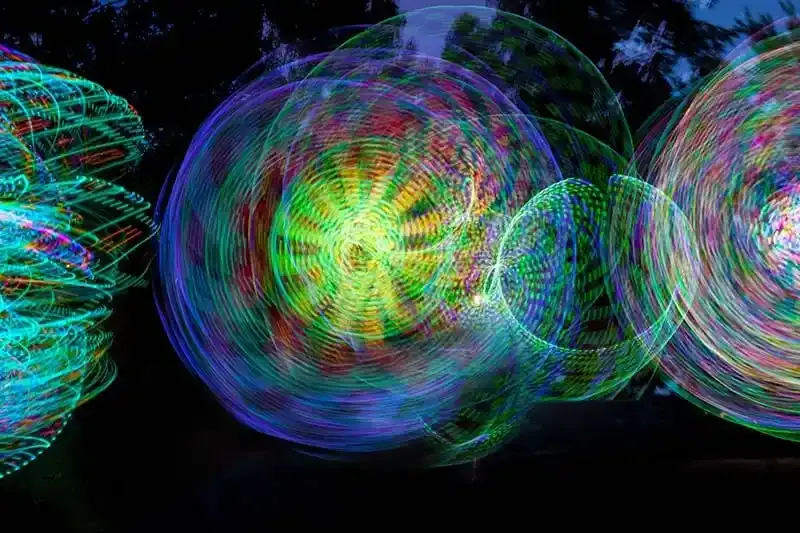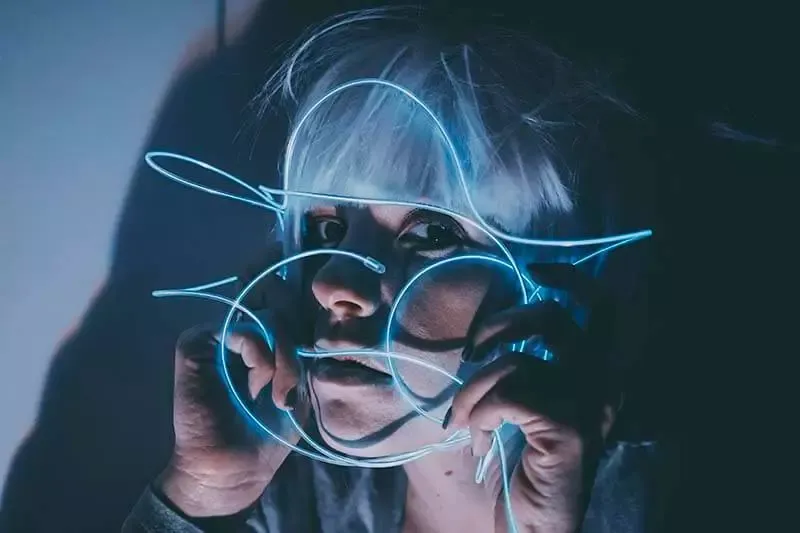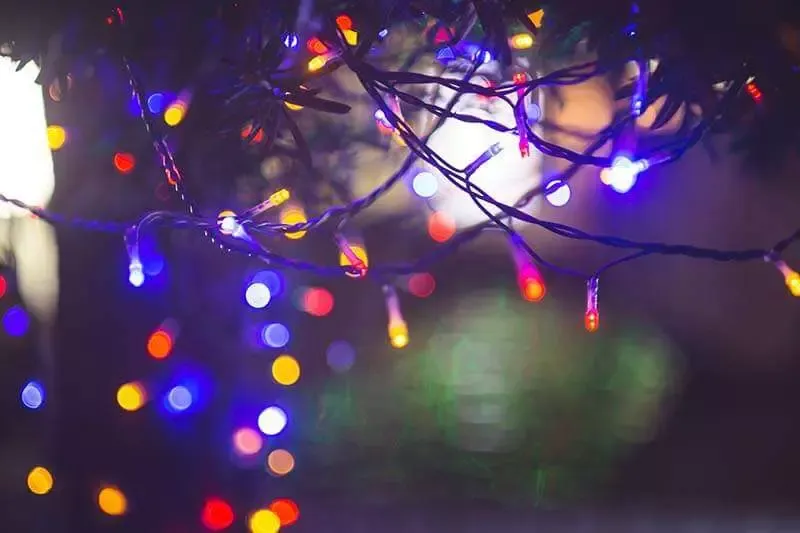Artists and interior designers understand that colors can influence our thoughts, attitudes and overall outlook on life. They also know that certain colors can help us relax and calm down, whereas others can make us feel stressed out and anxious.
In addition, certain colors can increase our energy levels and improve our focus. Therefore, they try to incorporate color into every room in their houses and offices.
In this article we will discuss color therapy, how light affects our mood, what colors affect our mood and how you can incorporate colored lights into your everyday routine.
What Is Color Therapy?
Color therapy is a form of psychotherapy that uses color to treat psychological problems. It was developed by Dr. Hans Selye at McGill University in Montreal, Canada. He believed that people could use color to change their emotions. For example, if someone feels depressed, he or she should surround themselves with blue colors. If the person is feeling angry, then red would be more appropriate.
The idea behind color therapy is simple: when we see different colors, our brain releases chemicals called endorphins. Endorphins are natural painkillers. When we see a particular color, it triggers these chemicals, which makes us feel happy, relaxed and energized. This effect lasts only briefly. However, it is enough to give us a boost of positive feelings.

How Does Color Affect Our Mood?
Light plays a major part in influencing our mood. The brightness of light can determine whether we feel happy, excited or tired. Bright lights make us feel awake and active. They also make us feel good about ourselves. On the other hand, dimmed lights make us feel sleepy and lazy.
Colors also have an immediate impact on our mood. We all know that bright colors such as yellow, green and orange stimulate us. These colors make us feel alert and energetic. On the other hand, dark colors like black, gray, brown and purple make us feel sad, gloomy and lethargic.

Natural light
Natural light can make you more productive. Consistent natural light exposure is correlated to better sleep and increased movement.
White light
White light is often used in hospitals and offices since it is less disruptive to patients and employees. However, research suggests that white light could disrupt circadian rhythms in people and animals.
Red light
Red light therapy has been shown to reduce anxiety and depression levels. A 2018 review article published in Frontiers of Human Neuroscience concluded that red light therapy is effective for treating anxiety disorders and depression.
Green light
Green light therapy has been studied extensively. In fact, there are over 200 studies on green light therapy alone. Many studies have focused on how it affects human sleep patterns. However, there is a lack of research on the effects of green light therapy in animals.
The benefits of green light therapy are many and include the following:
- Reduce stress
- Reduce anxiety
- Improve sleep patterns
- Boost moods
- Increase energy levels
- Enhance focus
- Decrease pain
- Improve skin conditions
- Promote healthy hair growth
- And much more!

Orange light
Orange light therapy has been shown in some studies to improve cognitive function, memory and reaction time.
Purple light
Purple light therapy has been studied for use in treatment of insomnia. A 2016 study published in the journal Sleep Medicine Reviews showed that purple light therapy improved sleep quality in people suffering from insomnia.
Pink light
Pink light therapy has been shown, in some studies, to increase alertness and decrease fatigue.
Blue light
Blue light therapy has been studied in the context of improving mood and reducing stress. Research shows that blue light therapy improves mood and reduces stress.
Yellow light
Research indicates that yellow light therapy may help fight seasonal affective disorder (SAD). SAD occurs in winter months when days are shorter and darker. People who suffer from this condition tend to experience low energy, sadness and irritability.
You Can Easily Add Colored Lights Into Your Daily Routine

If you want to add colored lights into your daily routine, you don’t need to buy any special equipment. You can simply install colored LED bulbs into your existing lamps. There are many different types of colored lights available. Some of them are:
LEDs with warm hues
These lights emit a reddish-orange color. Warm hues are great for relaxing environments.
LED bulbs with cool hues
These lights produce a bluish-green or bluish-purple color. Cool hues are perfect for energizing environments.
LED bulbs with neutral hues
These lights are similar to incandescent bulbs. They emit a soft white light. Neutral hues are good for both energizing and relaxing environments.
LED bulbs without hues
These lights do not emit any color at all. They are ideal for creating an ambience without any distractions.
Colored lighting can be used as part of your morning routine. It will help you wake up feeling refreshed and ready to face the day. If you want to relax after work, you can use colored lights to help you unwind.
How To Choose The Right Color For Your Home
Choosing the right colors for your home is important because they impact your mood. When choosing colors for your home, consider these factors:
Your personal preference
Ask yourself these questions about your personal preference: What kind of atmosphere do you like? Do you prefer bright or dark rooms? Do you like calm or energetic spaces?
The type of furniture you own
Consider the type of furniture you own and how it contributes to the look and feel of a space. Ask yourself some key questions. Are you looking for a calming environment or one that makes you feel more energized? Are you looking for a space where you can focus or relax? Then consider which color/s for the room would match your preference.
The season
When you choose colors for your home, think about what season it is. What colors would look best during summer or winter? During which seasons do you spend most of your time indoors? During the summer, you might find yourself spending more time outdoors than inside. On the other hand, during the winter, you might find yourself staying indoors more often than usual.
Consider the room
Think about which room you want to decorate first. Is it the living room, bedroom or kitchen?
Once you know what you want, start by thinking about the colors you already have in your house. Then, take a step back and ask yourself if those colors match your vision.
Once you have decided on the right colors, you can start shopping online. You can find a wide variety of colored lights at Amazon.com.
Lighting fixtures
Will you be using recessed lighting or track lighting? Recessed lighting is better for small rooms. Track lighting is best for large rooms.
Light color
The color of the light affects your mood and it is also important to know that different colors have different effects on us. The most common colors are red, blue, green, yellow, white and black. These colours affect our body in various ways. For example, blue light is calming and helps us relax. Orange light is stimulating and energizing. Green light is healing and balances hormones.
Color temperature
Will you be using fluorescent or halogen bulbs? Fluorescent bulbs have a higher color temperature than halogens. This means that they emit a warmer light. Halogens have a lower color temperature.
FAQs
What is color psychology?
The color of the light is not only important for your mood, but also for your health and well-being. The right lighting can help you to relax or stimulate you, or even boost your productivity. Lighting in the bedroom is especially important because it affects your sleep quality.
It is therefore very important that you choose the right type of light bulbs for your home. The color of the light affects us in different ways and it is important to know how to use this knowledge for your own benefit.
How do I use led smart lighting colors to control my mood?
Led light bulbs are a type of light bulb that uses LED technology to produce light. They’re often used in commercial and residential applications, but they can also be found in some vehicles.
The main difference between traditional incandescent or fluorescent lights and LED lights is the way they emit light. Incandescent and fluorescent lights use filaments inside the glass tube to create heat which then is converted into light. An LED is a semiconductor device that produces visible radiation by recombination of electrons and holes within an active region of the device.
So, what’s the best way to get the most out of your lighting? To use it in different ways. The right light for one room may not be ideal for another, and vice versa. For example, if you are using a desk lamp for reading or studying, then you’ll want to avoid placing it too close to your computer screen. This will cause glare which could make it difficult to read.
Remember, the color of the light is not only important for your mood, but also for your health. The right lighting can help to reduce stress, improve sleep and even increase productivity.
Blue light is the most calming and relaxing of all colours, which makes it perfect for meditation or relaxation. It also helps to relieve depression and anxiety.
Orange light is stimulating and energising, making it ideal for creative work and concentration.
Yellow light is warm and friendly, so it’s great for social situations.
Green light is soothing and grounding, helping us to relax and unwind.
In Conclusion
The color of the light is not only an aesthetic factor, but also affects your mood and energy level. The right lighting can make you feel more alert and focused, while a lack of it can leave you feeling tired and sluggish.
The most important thing is to know what kind of mood you want to achieve and then choose the right lighting for your space.





